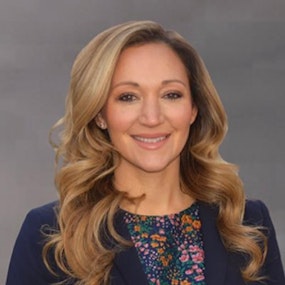ROBERT JOHNSON:
This is the award-winning Public Health Review Morning Edition for Wednesday, January 17, 2024. I'm Robert Johnson. Now, today's news from the Association of State and Territorial Health Officials.
BRIANNA GORMAN:
For several years now, public health has been trying to figure out how to better communicate and integrate services more holistically to take care of population health concerns.
JOHNSON:
Although public health does not provide medical care, ASTHO's Briana Gorman says agencies can help bridge the gap between the two.
GORMAN:
Public health agencies do address access issues by supporting the workforce, advocating for communities with limited access to providers, facilitating the referral system, and then also leveraging state Medicaid programs to meet specific social needs to name a few examples of that bridge.
JOHNSON:
Gorman says there are many examples of actions agencies can take to connect public health and health care in their communities.
GORMAN:
A few approaches currently within recent legislation include supporting telehealth infrastructure, for example, this could be the expansion of broadband services, also evaluating the efficacy of public health agencies and delivering on those core public health services, which includes standardizing those access to care metrics, and then also adjusting provider reimbursement to reflect diverse patient needs.
JOHNSON:
Gorman and colleague Ashley Cram write about these connections in a new blog article now online. You can read it using the link in the show notes.
JOHNSON:
A new year means new opportunities to work for more funding of public health. Many are looking to learn how Indiana was able to get lawmakers to approve a 1500% increase in funding last year. Dr. Lindsay Weaver is Indiana state health commissioner and an ASTHO member. She says it helped that local agencies were given the option to join the program.
LINDSAY WEAVER:
So, it wasn't an automatic statewide, they had to actively decide as a community about whether or not this was a program and funding they wanted to do.
JOHNSON:
Weaver says funding flexibility was another selling point that helped to gather support for the proposal.
WEAVER:
I think another exciting and unique thing about this particular legislation and funding is that they can use it, the funding, in any way to address support public health services that they feel is necessary locally.
JOHNSON:
Weaver expects counties will make the most of the money they get from the plan.
WEAVER:
So, a good example is infant mortality, right? So, in one community, it may be talking about safe sleep, and another community and maybe making sure that women get access to prenatal care. So, they're really able to tailor it to what their local needs are. Weaver and
JOHNSON:
Weaver and a former state lawmaker who helped lead the legislative campaign. We'll talk about the Indiana experience in a webinar set for Tuesday, February 6 at 1 p.m. ET. Sign up to attend using the link in the show notes.
Also today, it'll be a while before we can expect a peak in flu and COVID cases across the country. That's the assessment of experts quoted in an article written by Scripps News. ASTHO Chief Medical Officer Dr. Marcus Plescia reminds readers there's still a lot of concern about COVID and possible mutations of the virus. You can read the story by clicking the link in the show notes.
Finally, this morning, overdose legislation is now easy to search and examine thanks to an online dashboard. O'Keyla Cooper has more.
O'KEYLA COOPER:
ASTHO in collaboration with CDC conducted legal mapping research on overdose prevention policies across states and territories. The resulting policy maps highlight harm reduction laws, naloxone distribution, fentanyl test strips, and overdose prevention centers as of January 1, 2023. Read more about ASTHO's legal mapping work using the link in the show notes.
JOHNSON:
Before we go, we'd like to remind you to follow this newscast on your podcast player and ASTHO on social media. We're on LinkedIn, Twitter, and Facebook.
That'll do it for today. We're back tomorrow morning with more ASTHO news and information. I'm Robert Johnson. You're listening to the award-winning Public Health Review Morning Edition. Have a great day.






